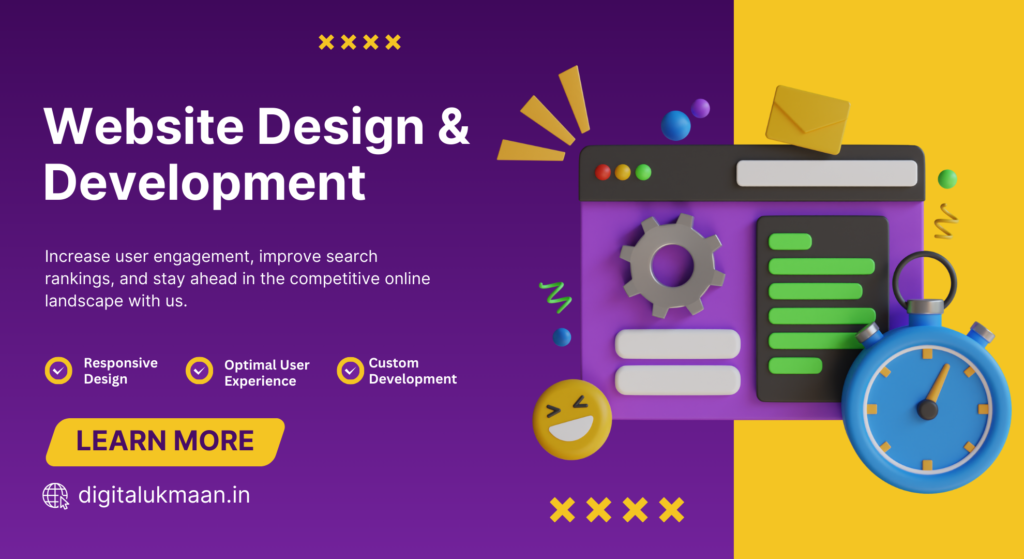Website Development: A Complete Guide
Website development is the process of building and maintaining websites, encompassing everything from simple static pages to complex dynamic web applications. It involves various aspects such as web design, web content development, client-side and server-side scripting, network security configuration, and e-commerce development. Developers use different programming languages, frameworks, and tools to create functional, user-friendly, and visually appealing websites that meet specific business or personal goals. Effective website development ensures a seamless user experience, fast load times, and compatibility across different devices and browsers.
1. What is Website Development?
Website development refers to the process of building websites and web applications. It includes web design, content development, server-side scripting, and database management.
Key Components of Website Development:
- Frontend Development – The visual and interactive part of a website that users see (HTML, CSS, JavaScript).
- Backend Development – The server-side logic and database management that power the website.
- Full-Stack Development – A combination of both frontend and backend development.
2. Website Development Process
Developing a website involves several steps:
Step 1: Planning & Research
- Define website goals (e.g., business, portfolio, blog, e-commerce).
- Identify the target audience and competitors.
- Choose a domain name and hosting provider.
Step 2: Designing the Website
- Create wireframes and UI/UX designs.
- Select color schemes, fonts, and layouts.
- Ensure mobile responsiveness and accessibility.
Step 3: Development & Coding
- Convert design into functional web pages.
- Use HTML, CSS, and JavaScript for frontend development.
- Implement backend technologies like PHP, Python, Node.js, or Ruby on Rails.
Step 4: Content Creation
- Write engaging and SEO-friendly content.
- Add images, videos, and interactive elements.
- Optimize for search engines (SEO).
Step 5: Testing & Debugging
- Check for bugs, broken links, and performance issues.
- Test compatibility across different devices and browsers.
- Ensure security with SSL and other protocols.
Step 6: Deployment & Maintenance
- Launch the website on a live server.
- Regularly update content and fix issues.
- Monitor performance and optimize speed.
3. Popular Website Development Technologies
Frontend Technologies
- HTML – Structure of web pages.
- CSS – Styling and layout.
- JavaScript – Adds interactivity (React, Vue.js, Angular).
Backend Technologies
- PHP – Widely used for dynamic websites.
- Python (Django, Flask) – Popular for secure and scalable applications.
- Node.js – Handles real-time and high-performance applications.
Databases
- MySQL & PostgreSQL – Structured databases.
- MongoDB & Firebase – NoSQL databases for flexibility.
4. Types of Websites
- Static Websites – Simple, fixed content (e.g., portfolio, informational websites).
- Dynamic Websites – Interactive and database-driven (e.g., social media, e-commerce).
- E-commerce Websites – Online stores with payment gateways (e.g., Amazon, Shopify).
- CMS-based Websites – Built using platforms like WordPress, Joomla, or Drupal.
5. Importance of Website Development
A well-developed website offers several benefits:
✔ Increases Online Visibility – Improves brand awareness.
✔ Enhances User Experience – Ensures smooth navigation.
✔ Boosts SEO Rankings – Helps websites rank higher on search engines.
✔ Improves Security – Protects user data from cyber threats.
✔ Generates Revenue – Enables businesses to sell products and services online.
6. Website Development Trends in 2025
🚀 Progressive Web Apps (PWAs) – Enhance user experience with fast loading times.
🌍 Voice Search Optimization – Websites optimized for voice assistants.
🔒 AI-Powered Chatbots – Improve customer engagement.
📱 Mobile-First Design – Ensures better performance on smartphones.
🎨 Dark Mode UI – Offers better visual comfort.
Conclusion
Website development is an essential part of building an online presence. Whether you’re a business owner, blogger, or developer, understanding the basics of web development can help you create functional and visually appealing websites. Keeping up with the latest trends and best practices ensures long-term success in the digital space.
